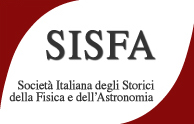Speaker
Description
The idea of a well-ordered and hierarchically structured Cosmos dates back to the very origins of astronomy and cosmology in remote antiquity. Independently from the questions of whether our Universe is finite or infinite, built up with the same matter of our local world or not, geocentric or heliocentric, bounded or boundless, with a definite age or eternal, stationary or expanding, until the most recent versions of the Multiverse hypothesis and their quest for an ultimate Theory of Everything, this heuristic ideal have always guided astronomers, cosmographers, natural philosophers, as well as later astrophysicists and cosmologists throughout the centuries. It can be regarded as inherent to any knowledge of the (meta-)physical Whole as such. However, in modern astronomy and mathematical physics, this Hierarchical Principle only became a coherent theory of the overall structure of the Universe under the pressure of finding a solution to four main puzzles, already contained in Newton's Principia: 1) the three-body problem; 2) the long-term stability of the “world system”; 3) the darkness of the night sky; 4) the nature of gravity itself. I will follow these deeply intertwined problems that shaped the cosmological debate of the last three centuries, before and after Einstein's General Relativity, along with the main developments in observational astronomy and experimental astrophysics: from Messier's nebulae to Hubble's red-shifted galaxies, from the large-scale isotropy of the CMB and homogeneity of the Cosmic Web to the theoretical speculations on the fractal structure and transfinite hierarchy of the Multiverse(s).

